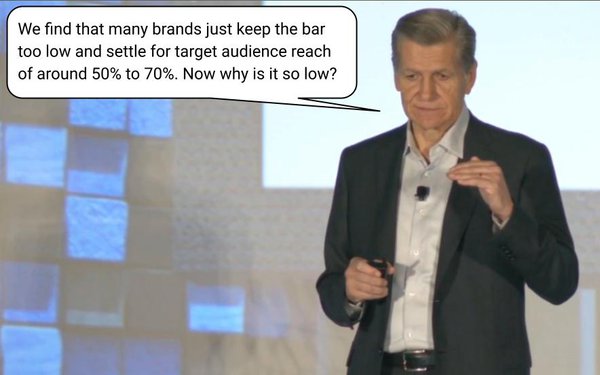
Bigger ad budgets aren’t necessarily
better, Procter & Gamble Chief Brand Officer Marc Pritchard told attendees during a keynote at the Association of National Advertisers’ (ANA) annual media conference Thursday. But bigger
reach is. Then he told them how to achieve it.
Noting that after years as the ad industry’s largest advertiser P&G no longer is, Pritchard implied that was almost
intentional because, well, less can sometimes mean more.
“Does it mater? Not really, because the current definition of the world’s largest advertiser is about who spends
the most money on advertising,” he said, taking a jab at big brand spenders who use their largesse instead of spending smarter.
“Celebrating the company as the largest
advertiser implies that it is better to spend more and more each year,” he said, noting: “We see it a little differently. That it’s time for a reset.
advertisement
advertisement
“It’s not who spends the most that matters. What matters is who reaches the most consumers with the greatest media precision with the highest advertising effectiveness and the
optimum efficiency and delivers sustained growth and value creation.”
Specifically, Pritchard outlined how P&G has progressively developed smarter media planning and buying
systems, utilizing better and more insightful data to save millions of dollars in wasted frequency, while boosting its target audience reach.
“We find that many brands just
keep the bar too low and settle for target audience reach of around 50% to 70%,” he said, adding: “Now why is it so low?
“We’re resetting the bar to achieve
90% target audience reach. And getting as close as possible to 100%. We want to reach all consumers and each consumers.”
Utilizing P&G’s Tide detergent brand as an
example, he showed how its reach goals -- and delivery have evolved -- in recent years. First by developing new media-planning algorithms for optimizing network TV ad placements that boosted reach and
saved $65 million.
“Now they’re using an algorithm to test a new way to buy ads that’s spread evenly across all TV programs, channels and dayparts, which should
increase reach another three points and save another $40 million,” he said, adding that the next area of improvement will be in ads placed on streaming video services that currently have excess
ad frequency within their shows.
As part of that shift, he said P&G has moved to “smaller streaming services” including Sling, Crackle and Tubi that are enabling it
to achieve more “unique reach,” because they deliver more unique audiences.
“To find those audiences, Tide switched to programmatic media-buying, finding connected
TV IDs across all platforms that could stop duplicating ad frequency, increase reach and save money,” he said, adding that cumulative effect of the changes the brand has made now enables Tide to
reach “86% of households and they have a line of sight toward 92%.”
Key to that strategy -- not just for Tide, but for all of P&G’s brands -- is shifting from a
mainstream media-buying mindset to one focused on achieving “90% to 100% reach among each multicultural group: Black, Hispanic, Asian Pacific, Indigenous, White, people with disabilities, and
LGBTQ+ consumers.”
To do that, he said P&G is shifting more of its ad budgets to placing “representative and relevant advertising in resident and
multiculturally-owned and targeted media programming.”